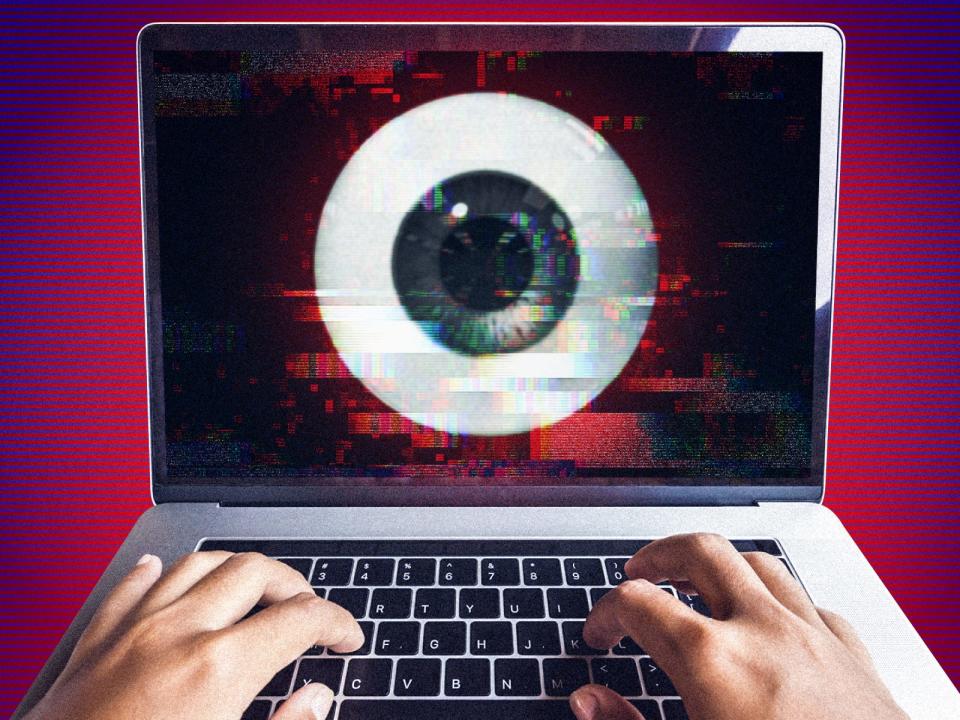It’s no secret that some companies use surveillance software to monitor employees.
But the return-to-office wars have also brought attention to how they monitor staff for attendance.
Here’s how firms use “bossware” to keep tabs on employees, from tracking keystrokes to breaks.
If you’ve ever thought your employer was watching, you may not be wrong.
Some companies use workplace surveillance tools to keep tabs on their workforce, whether to see employees’ productivity or monitor their comings-and-goings to the office as the return-to-office debate rages on.
Here are some of the ways companies spy on their workers:
Badge swipes
Many employees swipe their badges to get in or out of their offices, and that data has become a gold mine for companies enforcing return-to-office mandates.
As the company escalates its RTO push, Amazon has started tracking and sharing individual office attendance records, Insider’s Eugene Kim reported Thursday. Employees can see their own “Badge Report” on an internal HR dashboard showing the number of days they badged in per week, and for each of the past eight weeks.
The move is a reversal of an old policy of only tracking anonymized, aggregated office attendance data, which Amazon said was shared with managers, mostly for safety and space-planning purposes.
“This tool gives employees and managers visibility into the days they badged into a corporate building,” Amazon spokesperson Rob Munoz previously told Insider in an email. “The information will help guide conversations as needed between employees and managers about coming into the office with their colleagues.”
Goldman Sachs has also been using employee ID swipes to track who goes to the office and ultimately help crack down on employees who aren’t working in the office enough, Insider reported last year. JPMorgan has done the same, using swipe data to generate special reports and dashboards that managers then use to enforce in-office quotas, including via calls and emails from senior leaders to staffers who aren’t complying.
JPMorgan’s dashboard “provides the percentage of days employees were in the office out of the possible eligible days,” a description on the company intranet says.
“Look at this and compare against what you’re requiring for your team. For example, if your team is meant to be in 3 days a week, this number should equal 60%,” one leaked intranet post said, noting that the records are accessible to managing and executive directors.
Keystrokes, internet usage, and even webcam access
Employee time-tracking software can give companies a window into what staffers are doing on their laptops, and it’s gotten more popular in the age of remote work.
Carlo Borja, content marketing manager for workday analytics company Time Doctor, previously told Insider that their software provides real-time dashboards and progress reports on employees’ productivity levels, including things like their time in and out, breaks, and internet and app usage. One Time Doctor tool even lets businesses take screenshots and video recordings of employees’ screens.
“We help companies get peace of mind with productivity analytics,” he previously told Insider.
Some employee-tracking software also offers the ability to log employees’ keystrokes or even activate their microphones or webcams without them knowing.
JPMorgan uses a proprietary system called the “Workforce Activity Data Utility,” or WADU, to gather more wide-ranging data.
The system can see everything from how long employees spend on Zoom calls, emails, and spreadsheets, to when they reserve seats in the office, Insider’s Reed Alexander reported last year.
So-called bossware has grown more popular in the age of remote work.
In a ResumeBuilder.com survey of 1,000 US business leaders in March, 96% of respondents at organizations with a primarily remote or hybrid workforce said their firms used some type of employee-monitoring software. Pre-pandemic, only 10% of those companies were doing so, the survey found.
Sensors tracking employees’ whereabouts in the office
Some employers may even keep tabs on where employees spend the most time in the office. Australian firm XY Sense sells sensors that can be mounted onto ceilings to scan an office floor and identify heavily trafficked or underused areas, in theory to better allocate space.
CEO Alex Birch previously told Insider the devices don’t identify individuals but render them as dots on a screen.
“It’s not about Big Brother or monitoring anyone. It’s actually about understanding exactly how space is used,” he said.
Water-cooler breaks
High-tech water coolers may even offer up some data to employers.
Bevi, the maker of flavored water machines, logs how often workers use its machines. Co-founder Sean Grundy previously told Insider the company was able to see from this data that more workers were getting to the office before 9 a.m. or staying past 5 p.m. than before the pandemic.
Read the original article on Business Insider
Credit: Source link




